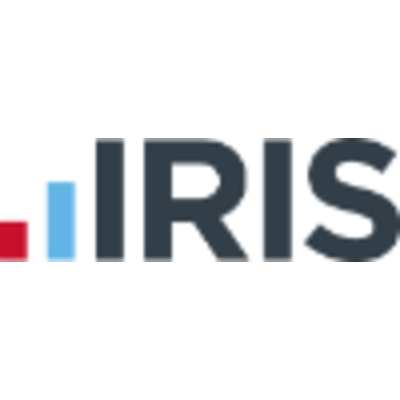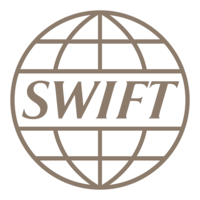Published
- 09:00 am

The number of real-time payment systems in use around the world has increased 35 percent over the past year and nearly fourfold since 2014, according to new research released today by FIS™ (NYSE: FIS), a global leader in financial services technology.
In its sixth annual Flavors of Fast report, FIS identified 54 countries with active real-time payment programs, up from 40 in 2018 and nearly four times as many named in the inaugural 2014 study. Leading contributors to this increase were new programs launched in Asia and the expansion of Europe’s SEPA Instant Credit Transfer (SCT Inst) scheme.
The report rated real-time payments programs around the world on a scale of 1-5 (5 being the highest), as part of its “Faster Payments Innovation Index.” Programs were rated on innovative features, fund availability and market application. India received the only 5+ rating and remains the global leader in real-time payments usage. The country saw a 10-fold increase in value and an eight-fold increase in transaction volumes through its national immediate payment service (IMPS) over the last year.
Six countries (Australia, Denmark, Poland, Romania, Singapore and Sweden) received a 4+ rating for their real-time payments systems. The U.S. and U.K. were among 31 other countries or regions with a 4 rating for their faster payments schemes.
“Consumers and businesses globally are demanding faster payments, and more countries and financial institutions are hearing the call and taking action,” said Raja Gopalakrishnan, EVP, International Banking and Payments at FIS. “While this is good news for the marketplace, we are only at the beginning of this revolution and much more investment is needed to make the global transition to real-time payments.”
The FIS research found that growing use of chat-based services, retail apps, instant loans and open APIs, as well as the migration toward the ISO 20022 global payments standard, are key factors that are driving the increased adoption of real-time payments around the world.
“Real-time payments are expanding across the globe at an unprecedented pace,” said Ron Van Wezel, senior analyst, Aite Group. “Financial institutions that have a strategy in place for real-time payments will be ahead of the game.”
Related News
- 09:00 am

CryptoCompare, the leading provider of cryptocurrency data and indices, today released its August 2019 Exchange Review which provides analysis of key developments in the cryptocurrency exchange-traded market.
Charles Hayter, Co-Founder and CEO of CryptoCompare, said:
“Our August Exchange Review examines the major developments in the crypto exchange landscape. Highlights in this edition include a new spotlight on stablecoins and expanded analysis of derivatives.”
CryptoCompare’s Exchange Review evaluates the consistency and quality of cryptocurrency exchange data, assessing exchanges on the basis of spot 24-hour volume and pricing data. The review covers: exchange rankings by volume; predominant fee types; derivative products; fiat, bitcoin and stablecoin volumes. It also analyses how volumes have developed for the top trans-fee mining and decentralised exchanges.
The August Exchange Review includes a new spotlight on stablecoins as well as an expanded section focusing on derivatives.
Key highlights:
D-rated exchange LBank saw an average trade size of roughly fourteen times that of AA-rated Coinbase (for BTC-USD and BTC-USDT trades).
In terms of trade count, LBank traded an average of 11,000 trades per day, while Coinbase traded around 68,000 trades per day.
D-rated Bitmax, a trans-fee mining exchange, constituted roughly half of all USDT volume.
USDT trading volume on Bitmax was generated predominantly by two stablecoin markets: USDC-USDT and PAX-USDT. From the end of June 2019, the exchange saw significant trading volumes from these two pairs, only to drop off abruptly at the beginning of September.
Despite a significant decrease in trade volumes, daily web traffic on Coinbase and Binance increased greatly.
For Binance and Coinbase, daily unique visitors (estimate based on Alexa data) were up 68.5% and 123.6% respectively since July.
Binance was the most popular exchange in August, followed by Coinbase and BitTrex with 92,593, 89,969 and 22,237 daily unique visitors, respectively.
Exchanges graded AA-E (according to the CryptoCompare Benchmark) saw their market share drop in August, with top-tier exchange volumes seeing the largest decline.
Exchanges with grades AA represented 3.3% (21.74 billion USD) of total aggregate volume in August, down 30.0% (from 31.06 billion USD in July), while those rated A and B represented 12.0% (80.21 billion USD) and 4.2% (28.28 billion USD) respectively, down 35.0% (A) and 42.3% (B).
Lower-tier exchanges still dominate
Trading volume is still dominated by lower tier exchanges, with D-E rated exchanges representing 71.1% combined (473.84 billion USD).
Crypto-to-Crypto trades were down nearly 20% in August
Volume from crypto to crypto exchanges decreased 19.16% in August, while volume from exchanges that offer fiat pairs decreased 14.90%. Binance was the top crypto-to-crypto exchange by total volume in August. The exchange saw trades of 28.45 billion USD (down 41.46% since July). This was followed by OKEX and CoinBene at 28.41 billion USD (down 38.06%) and 28.01 billion USD (down 28.7%) respectively.
Related News
- 02:00 am

The largest provider of accountancy software in the UK, IRIS Software Group, has today unveiled the first incarnation of its new software platform which is set to transform how accountants work.
The next generation adaptive platform will connect client data to the heart of the workflow and integrate a rich inventory of solutions and services. This allows practices to adopt at their own pace through an ecosystem of coexisting desktop, cloud and third-party apps.
JF Sullivan, chief product officer at IRIS Software Group, said: “Accountants are at a tipping point. They face significant developments in the industry driven by the increasing commoditisation of standard compliance services and the changing technology needs of their clients. They want to evolve into trusted business advisors but this shift can only be achieved if the tools and technology they use supports the change.”
“IRIS Elements frees accountants from non-billable work. Growth opportunities can be exploited by adding new apps and functionality as the needs of their business evolve. And client data can be mined to provide insight and inform decision making on their clients’ behalf.”
Based in the cloud, IRIS Elements, will automate many compliance tasks, easily synching with other services to instantly check Companies House data, for example, or cross-check identity documentation at the touch of a button.
Included in the first phase of IRIS Elements, unveiled today, is the Anti-Money Laundering (AML) module. This automatically runs eight separate checks including identity validation, electoral roll check and sanctions screening with results available in seconds, making it simple to validate a person’s identity, one of the core tasks accountants perform. Enabling compliance checks to happen in real-time as part of an automated workflow, will help accountants combat fraud and onboard customers from the first meeting so they have more time to focus on the consultancy aspects of their role.
Future modules will take advantage of advanced technologies such as machine learning and AI. The full development roadmap for IRIS Elements will be agreed in partnership with its 21,000 customers, focusing on the modules most accountancy practices want first.
Related News

Jane Jee
CEO at Kompli-Global
As newer, more innovative technology enters the market, it is criminals, rather than law-abiding citizens, who are often the first to exploit it. see more
- 02:00 am

FSS (Financial Software and Systems), a global payments technology company, released a report titled – FSS Digital Banking Trends -- 2019, based on a study conducted among 12 banks in India. As part of the study, the company analysed transaction patterns of 4.9M unique customers between January and June 2019 to understand the current landscape for digital banking adoption patterns. The findings of the study would aid banks improve channel performance and identify areas for maximizing return on investment (ROI) and deepening consumer engagement.
Commenting on the study, Suresh Rajagopalan, President - Retail Payments, FSS stated, “As a leading provider of SaaS-based digital banking products, our aim is to equip banks with authentic, data-driven insights into customers’ mobile transactional patterns. With customers increasingly adopting the mobile as a channel for accessing accounts, our study indicates that banks have a significant opportunity to accelerate revenue momentum via tailored, easy-to-use digital offerings.”
Some key insights from the study –
- The impact of the mobile as a channel on banking transactions continues to grow with customers associating mobile with banking and payments. The mobile is now integral to customers’ financial lives with banks meeting most of their basic banking needs via the channel. Within 12 months, the company registered 42% growth in transaction. In the first half of 2019, FSS processed 294M transactions totalling USD 9B in value.
- Features tied to accessing and managing bank accounts are most sought-after by customers as per the study. This includes routine banking transactions such as PIN validation, balance enquiry and mini statement that comprise 75% of the traffic in terms of volume and frequency, reflecting customer comfort with accessing accounts and performing a range of informational tasks using digital banking apps. Whilst this is aiding banks deflect traffic from expensive branch-led and self-serve channels such as IVR and rationalizing the cost to serve, the revenue-generating up-sell and cross-sell capabilities offered by mobile as a tool need to be maximized.
- High transacting frequency does not translate into higher number of financial transactions per customer. The study grouped customers into five transactional segments basis monthly transactional frequency. This includes customers, who perform between 1-3 transactions (64%), customers who perform 3-5 transactions (11.5%), customers who performs 5-7 transactions (6.9%) and customers who perform 7-10 transactions (6.4%) and customers who perform 10 plus transactions (11.04%). An approximate 40% customers in low monthly transacting frequency category (1-5 transactions) enacted a transfer in comparison to 15% customers in the in the high transacting category (7-10 transactions).
- The convergence of digital banking and Faster Payment rails (IMPS) is propelling growth of financial transactions. Instant fund transfers leveraging IMPS rails remain an anchor service and is the most popular transaction set, contributing 97% to total financial transactions, reflecting customer need for speed and interoperability of money transfers. The average size of these transaction is approximate USD 73 compared to an approximate USD 26 over channels such as UPI. Quick transfers that do not require prior beneficiary registration are fast becoming a preferred fund transfer mode.
- Customer appetite for digital interactions varies by product. Banks have introduced a wide array of services, but financial product marketers need to strengthen monetization capabilities by moving away from a utility-driven, one-size fit all approach and introduce segmented tailored offerings. Most banks offer 200+ transaction sets and continue to expand through new use cases, technologies, and transaction types. As more features and functionality are added, currently customers use a mere 50% of available services. To encourage higher transactions and access new revenue streams, banks need to tailor offerings to transactional patterns of specific segments and make investments in customer journey analytics and improved services discovery.
- Data-driven win back campaigns and retention marketing strategies are as critical to digital banking growth as acquisition-driven strategies. An approximate 40% of customers who download the app and register for the service do not perform transactions, indicative that banks should be proactive in marketing the strong value of digital banking and need to channelize marketing dollars towards engagement and retention-driven marketing.
Going forward, digital banking will net a larger ROI for financial institutions that proactively work to build a robust mobile channel. FSS is rolling out new services that will help banks grow the transacting base such as in-apps payments using a digital banking app, open APIS to connect to third-party payment ecosystems such as Payment Gateway, biller networks and account aggregation services that enable users to view accounts across multiple banks using a single app.
Related News
- 02:00 am

ING today published the first progress report on Terra, ING’s approach to steer its €600 billion lending book in line with the goals of the Paris Agreement to keep global warming to well-below two degrees. With the Terra approach, ING aims to be a positive force in the fight against climate change. The progress report presents ING’s pathway towards climate alignment in the sectors most responsible for climate change and is intended to be published every year.
The disclosure addresses developments and climate alignment for the sectors: power generation, fossil fuels, automotive, shipping, aviation, steel, cement, residential mortgages and commercial real estate. These are the sectors in ING’s portfolio that are most responsible for greenhouse gas emissions. In a Climate Alignment Dashboard (CAD) the report presents which sectors are on track for climate alignment and where work is still in progress. This climate change disclosure is a first for banks.
Methodologies and standards are not yet finalised for each sector, but ING will continue to work with peers and sectors towards creating these. Knowing where we are today is a vital part of being able to chart a course for the low-carbon world we need in the future. ING aims to publish the climate alignment results for all sectors starting next year.
Ralph Hamers, CEO of ING said: “With this first Terra progress report, we are living up to our promise to transparently deliver results on measuring climate impact, setting targets and steering our portfolio. I strongly believe that we can only be successful in tackling the climate crisis if we all work together. That’s why we looked beyond ING and are building partnerships and coalitions that are bigger than just us. We’re working with other banks and governments to set a global industry standard for measuring and aligning our loan books with climate benchmarks. This unity is the key to being effective as a sector and being able to make a real impact.”
Related News
- 03:00 am

Broadridge Financial Solutions, Inc. (NYSE:BR), a global Fintech leader and part of the S&P 500® Index, announced that SILEX Investment Managers, a Paris-based asset management company, has chosen Broadridge’s integrated order management, portfolio management and risk management technology platform to help the company manage its front-, middle- and back-office investment operations.
SILEX will deploy Broadridge’s investment operations platform to manage its portfolios, enabling it to streamline and automate workflow around an array of traded instruments. Introducing these capabilities will help SILEX meet its pre- and post-trade compliance requirements while providing seamless connectivity to brokers and execution platforms. It will facilitate effective portfolio management as well as reporting for clients. In addition, SILEX will be able to conduct full market-risk analysis through the integrated Value at Risk (VAR) and stress-testing capabilities offered by Broadridge’s solution.
“After conducting an extensive selection process to determine the right solution to facilitate order management, portfolio management and risk management in a single platform for our business, Broadridge’s investment operations platform was the clear choice from a functionality, reporting and technology perspective,” said Fabrice Rey, general manager at SILEX Investment Managers. “This technology platform will also significantly reduce operational risk and increase cost-efficiency across our asset management business.”
“As we expand our asset management footprint into the French market, we are pleased that SILEX has chosen Broadridge to deliver a world-class and scalable investment management platform,” said Eric Bernstein, head of Broadridge’s asset management solutions. “Broadridge’s success in serving asset managers in Europe comes from more than just a strong world-class technology offering — it is also due to our established local hosting and support model, and the ease with which the service can scale up as our clients grow. This is a powerful differentiator for us and a winning combination for our clients.”
Related News
- 07:00 am

SWIFT has today published a new paper on the evolution of the European payments landscape and the preparations that need to be made by the region’s financial institutions. The paper, Brave new world: be ready for Europe’s new payments architecture, looks at the changes underway in Europe, the global context in which these are taking place and the challenging implementation timeline. It also sets out how SWIFT is supporting the industry through these changes.
Europe’s payments market infrastructures are being redesigned and renewed, allowing for greater operational and collateral/liquidity efficiency, and supporting innovation. The migration of Europe’s high value payment systems to ISO 20022 lays the foundations for richer, structured data end-to-end across the value chain and supports better compliance. The move to instant payments is also well underway, with many domestic initiatives either live or in the process of implementation, and two pan-European services already live.
Planning successfully for the go-live in 2021 of the Eurosystem’s TARGET Consolidation and the evolution of EBA CLEARING’s EURO1 demands careful consideration of the wider changes affecting the global payments landscape and the interdependencies and opportunities that will result. Understanding the pathways to future interoperability – and what will be required to fully participate in the future payments eco-systems – will be critical for financial institutions.
Once all the building blocks are in place, interconnected, global digital ecosystems will quickly emerge. In the near future, it will be possible to channel instant payments across borders and through domestic systems to beneficiaries’ accounts anytime, anywhere – with complete certainty and rich information.
Alain Raes, Chief Executive EMEA and Asia Pacific at SWIFT, said: “The financial industry is undergoing profound change. Migration to Europe’s new payments architecture will be a significant market event demanding careful planning and implementation. Financial institutions are getting ready for this huge change with an eye to the wider impacts for their business models and their customers in an interconnected, fast-changing global landscape. We are committed to supporting our community through this transformation as a trusted partner, and helping them to capitalise on the opportunities.”
What’s changing in Europe
The Eurosystem is modernising and consolidating its market infrastructures. Its high value payments system, TARGET2, and TARGET2 for Securities will be consolidated, and TARGET2 will be replaced with a new real-time gross settlement (RTGS) system using the ISO 20022 messaging standard. The new consolidated platform will be launched in November 2021.
In parallel, EBA CLEARING, the privately owned provider of pan-European payment infrastructure, is evolving its EURO1 and STEP1 platforms.
For financial institutions, these changes will be felt in three areas: format, connectivity and processes. In turn, each of these has an impact on the end-to-end chain of applications at financial institutions, which will need to cater for the additional information that is required and carried in the new ISO 20022 messages.
Since the ECB’s appointment of two network service providers (NSPs) in July 2019, banks have been able to select their NSP; the final deadline for selection is July 2020. All developments must be completed by October 2020. User testing with the Eurosystem will begin in March 2021, with migration set for 22 November 2021.
Reusing existing SWIFT technology for ESMIG connectivity safeguards users from the risks of a complex new implementation and allows futureproofing against other infrastructure changes. With a single window, financial institutions can connect to ESMIG for all TARGET Services and to EURO1, RT1 and other infrastructures of choice.
Related News
- 03:00 am

SACE SIMEST, the export and internationalisation hub of Cassa Depositie Prestiti Group, and Ebury, one of Europe's leading Fintech companies offering global transaction banking services to businesses, have signed a partnership which will facilitate access, especially for SMEs, to a number of insurance and financial solutions that can improve their international competitiveness.
Thanks to this collaboration, Italian exporters will have access to a range of highly digitized services for 360° protection of all risks related to international operations. The integrated service will give Italian SMEs protection against credit risk (via products from SACE SIMEST) and FX risk in over 130 currencies (via Ebury’s services).
“The partnership with Ebury allows us to offer to Italian SMEs innovative, transparent and competitive solutions in order to manage the volatility of foreign currencies, a very important variable for all those companies, especially the smaller ones, which trade with international markets – said Alessandro Decio, CEO of SACE - We are creating a digital platform, innovative and easy to access, where we wish to include also other important Fintech, like Ebury, with the aim to bring an increasing number of Italian companies to export all over the world, fully unleashing their potential. We are convinced that this is the first of further agreements with other Fintech, that operate in a complementarity way to SACE SIMEST, and that can increase support and competitiveness to the export of Italian SMEs.”
Juan Lobato, co-founder and CEO of Ebury, added, "Ebury’s mission is to help SMEs to grow in the global market, both by working directly with them as well as by collaborating with other leading financial institutions. With this strategic partnership, SACE SIMEST gets to the forefront of the collaboration between Export Credit Agencies and innovative Fintech companies: we are honoured to work with such an important institution to support the global growth of Italian businesses".
Paolo Giabardo, Chief Commercial Officer at Ebury, continued “We are really excited about the partnership with SACE SIMEST and how this will expand our support to Italian SMEs. This partnership is further validation of the effectiveness of our business model in providing transactional services to small and medium enterprises competing in the global market”.
For Italian businesses, the joint offer will also improve liquidity management and simplify international transactions, combining the services of SACE SIMEST, aimed at optimizing working capital, with the offer provided by Ebury, which aims to make international collections more efficient by offering currency accounts in more than 30 currencies and in more than 20 countries.
This is one of the first partnerships in Europe between an Export Credit Agency and a Fintech company and it represents a further milestone in the digital transformation process implemented by SACE SIMEST.
Finally, this collaboration will support Italian SMEs with an increased awareness of their exposure to currency volatility, access to dedicated specialists and world leading insurance and financial services to support their international growth.
Related News
- 03:00 am

Semafone®, the leading provider of data security and compliance solutions for call and contact centers, will host its next webinar, “The Omnichannel Contact Center: Implementing a Frictionless Payment Experience” at 11 a.m. ET on Friday, September 27. Register for the webinar here: http://bit.ly/2lLf8Ge
Co-hosted with Cheryl Helm, Contact Center Technology and Operations Management Consultant at Helm Communications; Pinar Alpay, Vice President – Acquiring Products and Transformation at WorldPay; and Mahendra Penumathsa, Founder and CEO of Unytalk, this webinar will demonstrate to contact centers how they can enhance customer service levels and securely collect payments across any communication channel.
Consumers today have access to a wide variety of communications channels through which they interact with businesses, including email, SMS, webchat, social media, IM and many more. No matter which they choose, they expect fast, frictionless and secure service. Drawing upon their vast experience in payments, data security and customer communications, Alpay, Helm and Penumathsa will discuss best practices for creating an exceptional customer experience across these channels and how to overcome the most common challenges associated with implementing an omnichannel payments strategy.









